Abergavenny to Hereford (39 miles in total)
I had to pick a battery up (the start of the electric bike project) from near Hereford and I thought it would be a good idea to ride there from Abergavenny. Like Noahs Ark; today has two of everything- castles, churches, manor houses, and two train journeys, it was a no-brainer. So I caught the train to Abergavenny, when I stepped off the carriage, it was sunny and 7°C, but as the weather men said; with the strong, blusterous, westerly wind it felt more like 2°C, it was absolutely bitter.
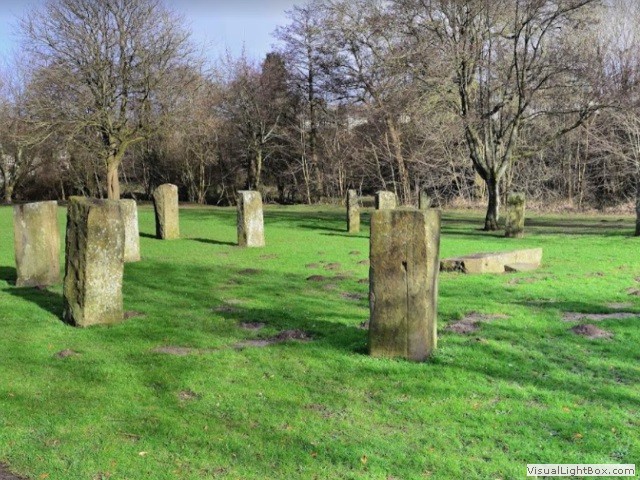 Near the bus station is a little path along the river Gavenny in Bailey Park, from here we rode along
Ross Road and turned right into Tridillion road then under a strange configuration of Railway and
road bridges, straight onto route 46. The single lane road climbs
sharply out of Abergavenny, though the high banks sheltered us from the wind. The road
has sunk five feet below the level of the fields, proving this was once a well trodden
path. Once the banks evened out, it gave way to spectacular views of the local major peaks;
the Blorenge, Sugar Loaf, and Skirrid Fawr. There were many Mediaeval barns and farmyards adjacent to the road,
now transformed into affluent homes. We turned into ‘New Court Lane’ and began climbing
again, shielded from the bitter wind by high dense hedgerows, but the elements had strewn small
branches onto the road making the back wheel skip a beat every time I went over one and
with the centre of the lane covered with dirt and moss, there was little chance of
avoidance. Considering we’re in the middle of no-where, it’s surprising how many houses
and farms have ‘No entry’, ‘Private’, ‘No unauthorised entry’ even ‘if you turn down this
road, you’re going the wrong way!’, maybe there’s a lot more unwanted visitors in the summer, because at this current time, I
didn’t pass a car in an hour. Right onto Hill Street we continue rising around the
underside of the Skirrid Fawr. Finally we turn right onto a proper road and pass a
homestead showing the flag of St David (the original native flag of ‘Wales’ was
Near the bus station is a little path along the river Gavenny in Bailey Park, from here we rode along
Ross Road and turned right into Tridillion road then under a strange configuration of Railway and
road bridges, straight onto route 46. The single lane road climbs
sharply out of Abergavenny, though the high banks sheltered us from the wind. The road
has sunk five feet below the level of the fields, proving this was once a well trodden
path. Once the banks evened out, it gave way to spectacular views of the local major peaks;
the Blorenge, Sugar Loaf, and Skirrid Fawr. There were many Mediaeval barns and farmyards adjacent to the road,
now transformed into affluent homes. We turned into ‘New Court Lane’ and began climbing
again, shielded from the bitter wind by high dense hedgerows, but the elements had strewn small
branches onto the road making the back wheel skip a beat every time I went over one and
with the centre of the lane covered with dirt and moss, there was little chance of
avoidance. Considering we’re in the middle of no-where, it’s surprising how many houses
and farms have ‘No entry’, ‘Private’, ‘No unauthorised entry’ even ‘if you turn down this
road, you’re going the wrong way!’, maybe there’s a lot more unwanted visitors in the summer, because at this current time, I
didn’t pass a car in an hour. Right onto Hill Street we continue rising around the
underside of the Skirrid Fawr. Finally we turn right onto a proper road and pass a
homestead showing the flag of St David (the original native flag of ‘Wales’ was
 of St David, the dragon
came after. Welsh kings first adopted a dragon on the flag in the early fifth century, but the current
form of the flag was only officially adopted by the Crown in 1959), and now the views open up to a
magnificent vista.
of St David, the dragon
came after. Welsh kings first adopted a dragon on the flag in the early fifth century, but the current
form of the flag was only officially adopted by the Crown in 1959), and now the views open up to a
magnificent vista.
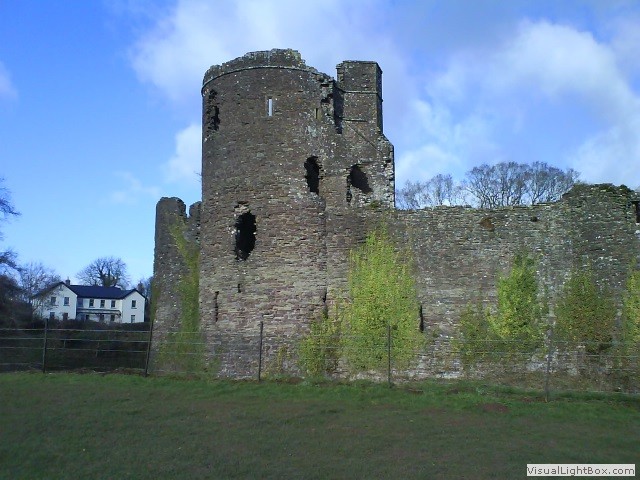 It’s downhill into the village of Grosmont to visit ‘Grosmont castle’, the Castle is a
remarkably well-preserved fortress, with the great hall as one of the first
features constructed. Before leaving the village, it's a visit to the church, the nave was
built in the same style as the early great hall of the castle. The tower and other parts of
the church fabric were built by Edmund for his mother, Queen Eleanor, the wife of Henry III.
Within its walls are the much eroded remains of an effigy of a twelfth century knight.
It’s downhill into the village of Grosmont to visit ‘Grosmont castle’, the Castle is a
remarkably well-preserved fortress, with the great hall as one of the first
features constructed. Before leaving the village, it's a visit to the church, the nave was
built in the same style as the early great hall of the castle. The tower and other parts of
the church fabric were built by Edmund for his mother, Queen Eleanor, the wife of Henry III.
Within its walls are the much eroded remains of an effigy of a twelfth century knight.
We cross the River Monow at Kentchurch, transversing across the border from Wales into England. Shortly after is Llanvihangel Court gatehouse, the main house would’ve been approached through the mighty 14th century castllated gatehouse and down a tree lined avenue past the church, and parkland which has one of the very few deer parks remaining in Herefordshire. We had to go around the gatehouse on the surrounding road (as the gatehouse and drive are private) and drop down near the Parish Church of Saint Mary rebuilt in 1859. Inside is a re-sited monument of the former house owner; ‘HERE LYETH THE BODY OF JOHN SCVDAMORE OF KENCHVRCH IN THE COVNTIE OF HEREFORD ESQ ......... HE DECEASED ON THE XXXth DAY OF MARCH ANNO SALVTIS 1616’. I rode towards Kentchurch Court, they only have a few open days a year, but you can walk around the gardens all year around, but all I wanted was a quick look at the outside of the house.
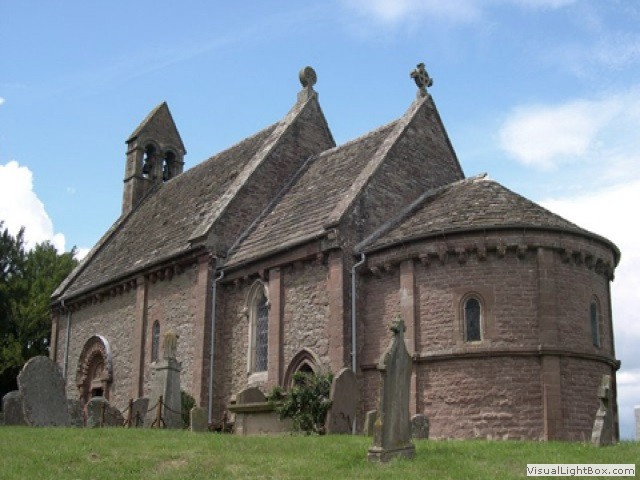 We continued along Bannut Tree Lane and after a few miles we enter the hamlet of
Kilpeck. Here is the Church of St Mary and St David, it was almost certainly built
before 1143. The church does have an unusual shape and walking around the graveyard
I spotted two gravestones dated 1765 and there was likely to be many more earlier,
but some of the headstones had worn away. Behind the church is Kilpeck castle, thought
to have been first built around 1090, up a muddy trail and onto a mound are the remains
of two neglected and not very well preserved stone towers. Though clearly visible, is a
fireplace and chimney flue. We turn left onto the B4348 and then following the NCR signs,
right on a small road that seems to go right through a farm and then (following the signs
again) onto a farm track that I’m defiantly sure the 700C boys and girls would wholeheartedly
object to. We pass Dewsall Court which takes us back onto tarmac. I bypass Hereford, through
Rotherwas where on an industrial estate, and out of the blue was an ‘army shunter’ on the side of
the road, a strange sight to behold. When I turned right onto the B439, there was a huge
picture of an old woman on the side of the road and a little way on there was a pillbox in what
looked like someone’s garden, all very curious. It wasn’t until I got home when I found out
there was a massive munitions factory here which was closed in 1967.
We continued along Bannut Tree Lane and after a few miles we enter the hamlet of
Kilpeck. Here is the Church of St Mary and St David, it was almost certainly built
before 1143. The church does have an unusual shape and walking around the graveyard
I spotted two gravestones dated 1765 and there was likely to be many more earlier,
but some of the headstones had worn away. Behind the church is Kilpeck castle, thought
to have been first built around 1090, up a muddy trail and onto a mound are the remains
of two neglected and not very well preserved stone towers. Though clearly visible, is a
fireplace and chimney flue. We turn left onto the B4348 and then following the NCR signs,
right on a small road that seems to go right through a farm and then (following the signs
again) onto a farm track that I’m defiantly sure the 700C boys and girls would wholeheartedly
object to. We pass Dewsall Court which takes us back onto tarmac. I bypass Hereford, through
Rotherwas where on an industrial estate, and out of the blue was an ‘army shunter’ on the side of
the road, a strange sight to behold. When I turned right onto the B439, there was a huge
picture of an old woman on the side of the road and a little way on there was a pillbox in what
looked like someone’s garden, all very curious. It wasn’t until I got home when I found out
there was a massive munitions factory here which was closed in 1967.
Not far from here is the battery, I strapped the item on the bike and headed back to
Hereford. We pass the very popular ‘Moon Inn’ originally built in the 16th century, and
through the hamlet of Mordiford, a very pretty place with a mixture of Tudor type houses
and stones cottages. Tucked away near the river is the Holy Rood Church. Mordiford, is known
for a dragon that supposedly lived there and until 1811 there was a large painting of a green dragon on the church tower
wall. We cross the river Lugg on the oldest surviving bridge in Herefordshire, dating in part
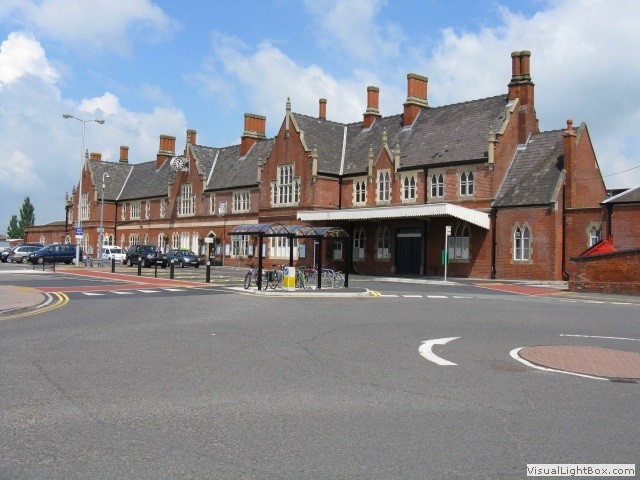 to 1352. The bridge itself isn’t that long, but the bridge walls continue on over some marshland making the road narrow
and dangerous for bikes. You’re never far from a hill in Herefordshire and the B4224 is no
exception, it is a fast straight road all the way in into Hereford. I'm catching the train
back and I arrived at this enchanting station (Barrs Court
Station), built in 1855, it's two storey's of cardinal red brick with groups of lancet
windows, there's loads of tall chimneys and I can imagine all of these puffing away one hundred
years ago, a typical Victorian station.
to 1352. The bridge itself isn’t that long, but the bridge walls continue on over some marshland making the road narrow
and dangerous for bikes. You’re never far from a hill in Herefordshire and the B4224 is no
exception, it is a fast straight road all the way in into Hereford. I'm catching the train
back and I arrived at this enchanting station (Barrs Court
Station), built in 1855, it's two storey's of cardinal red brick with groups of lancet
windows, there's loads of tall chimneys and I can imagine all of these puffing away one hundred
years ago, a typical Victorian station.
-
Gallery
 Why not have a look at the gallery relating to this ride. Click the image or the title.
Why not have a look at the gallery relating to this ride. Click the image or the title. -
The Holy Mountain
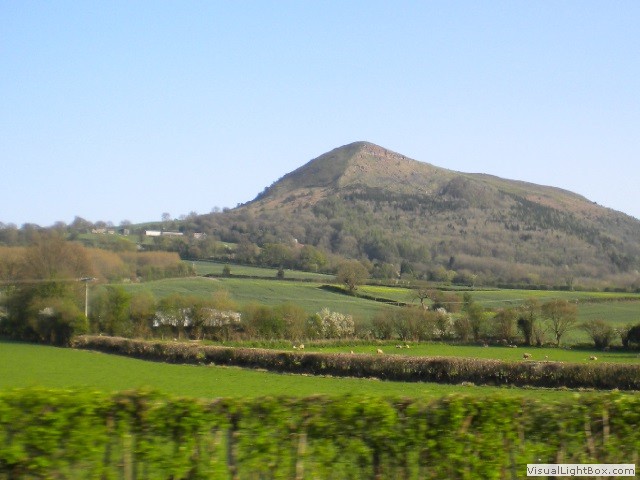 The Skirrid is known locally as ‘the Holy Mountain’. This may have come from the
now-ruined chapel of St Michael’s right on the summit, which was used by Roman
Catholics after the Reformation.
The Skirrid is known locally as ‘the Holy Mountain’. This may have come from the
now-ruined chapel of St Michael’s right on the summit, which was used by Roman
Catholics after the Reformation. -
First dragon born in 500 years
 On April 1st 2018 Bangor University successfully hatched the first Welsh Dragon
born in over 500 years. Scientists managed to clone the Welsh Dragon after finding
blood within mosquitoes that had been fossilized in amber. They then used the DNA
from the dragon blood to complete the cloning process. This of course was an April
fools joke, but it did cause a stir.
On April 1st 2018 Bangor University successfully hatched the first Welsh Dragon
born in over 500 years. Scientists managed to clone the Welsh Dragon after finding
blood within mosquitoes that had been fossilized in amber. They then used the DNA
from the dragon blood to complete the cloning process. This of course was an April
fools joke, but it did cause a stir. -
Llanvihangel Court ghost
 A spirit known as The White Lady of Llanvihangel Court is said to leave this sixteenth
century manor house at midnight and walk into a nearby wood.
A spirit known as The White Lady of Llanvihangel Court is said to leave this sixteenth
century manor house at midnight and walk into a nearby wood. -
The Kilpeck Sheela Na Gig
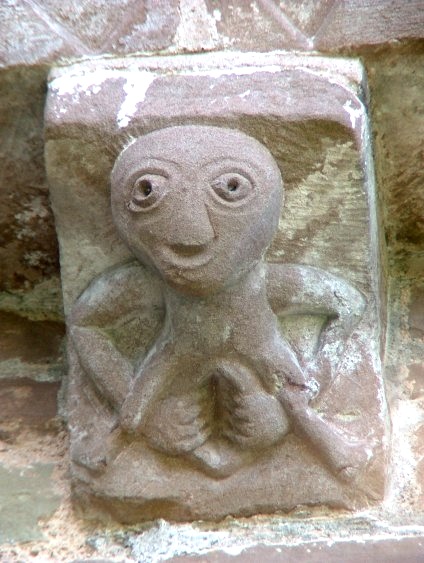 Sheela na gigs are figurative carvings of naked women displaying an exaggerated
vulva. The Sheela na gig on the Kilpeck Church is probably the most famous Sheela
image on the internet.
Sheela na gigs are figurative carvings of naked women displaying an exaggerated
vulva. The Sheela na gig on the Kilpeck Church is probably the most famous Sheela
image on the internet. -
The Rotherwas National Filling Factory
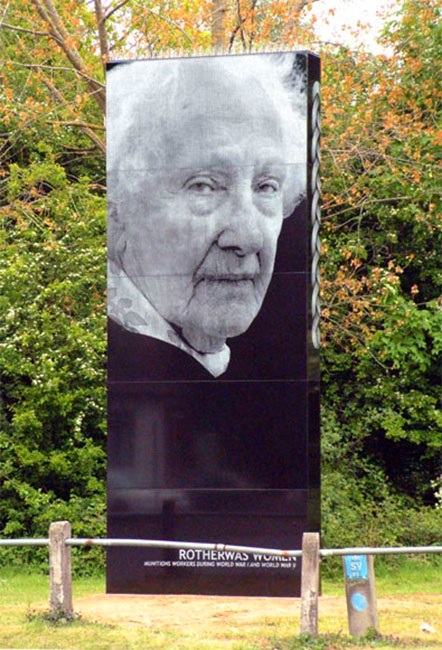 The Rotherwas National Filling Factory (NFF No14, Hereford) was built in haste in
1916, half way through WW1. At Rotherwas alone, they made between 70,000 and 95,000
shells a week, and women made up to 77% of the workforce. Unlike many of the other
Filling Factories, Rotherwas was kept open after WW1, and was refurbished in secret
ahead of WW2, this time with the title of Royal Ordnance Factory No 4, Hereford (ROF No4).
The Rotherwas National Filling Factory (NFF No14, Hereford) was built in haste in
1916, half way through WW1. At Rotherwas alone, they made between 70,000 and 95,000
shells a week, and women made up to 77% of the workforce. Unlike many of the other
Filling Factories, Rotherwas was kept open after WW1, and was refurbished in secret
ahead of WW2, this time with the title of Royal Ordnance Factory No 4, Hereford (ROF No4).
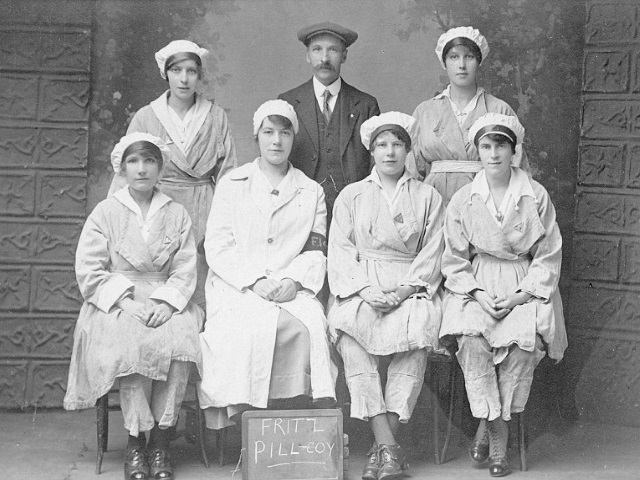 Many of the female workforce suffered fatal poisoning from exposure to lyddite and amatol
explosives, which turned their hair, teeth and skin yellow - earning them the nickname,
Canary Girls.
Many of the female workforce suffered fatal poisoning from exposure to lyddite and amatol
explosives, which turned their hair, teeth and skin yellow - earning them the nickname,
Canary Girls.
In 1942, a Nazi plane dropped two 550 pound bombs on the site, killing 22 people. It suffered another major explosion in 1944 when a 2000 pound bomb overheated in a filling shed and went off, destroying several buildings.
